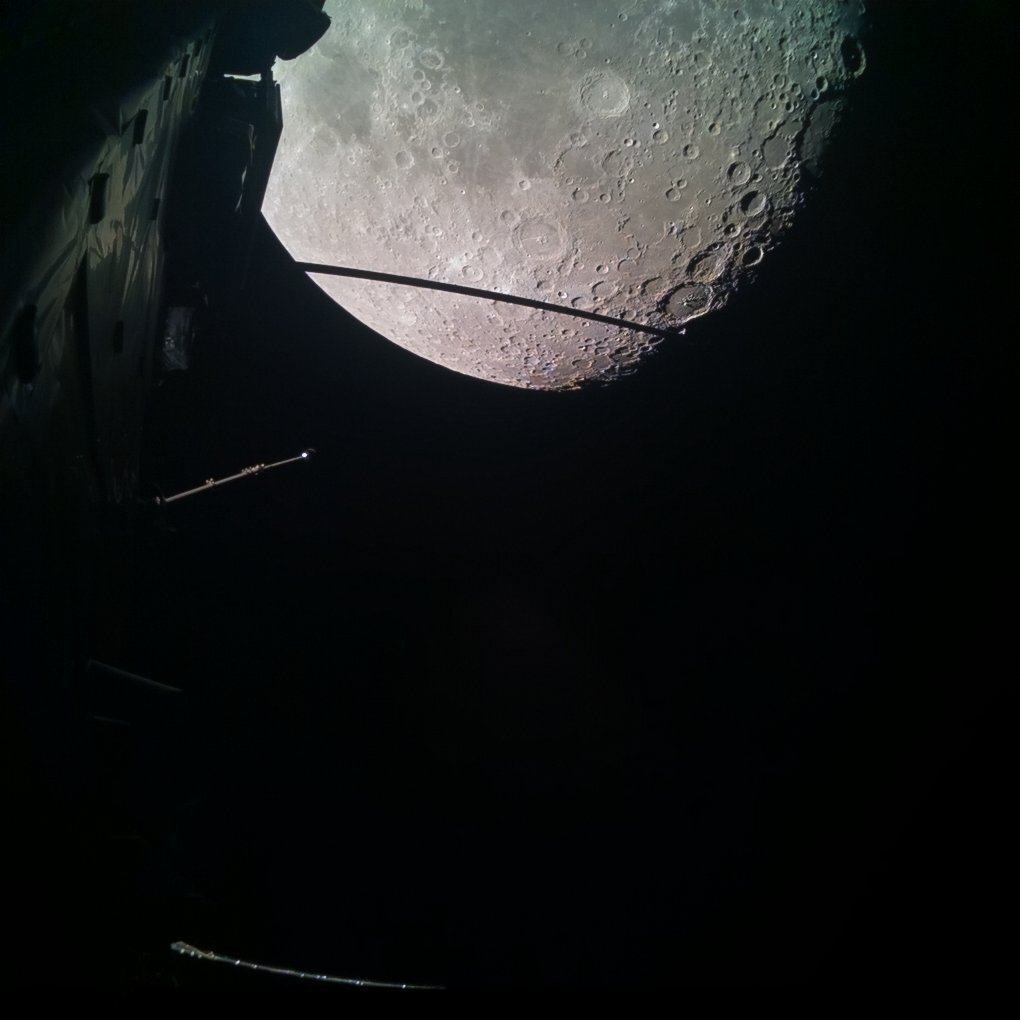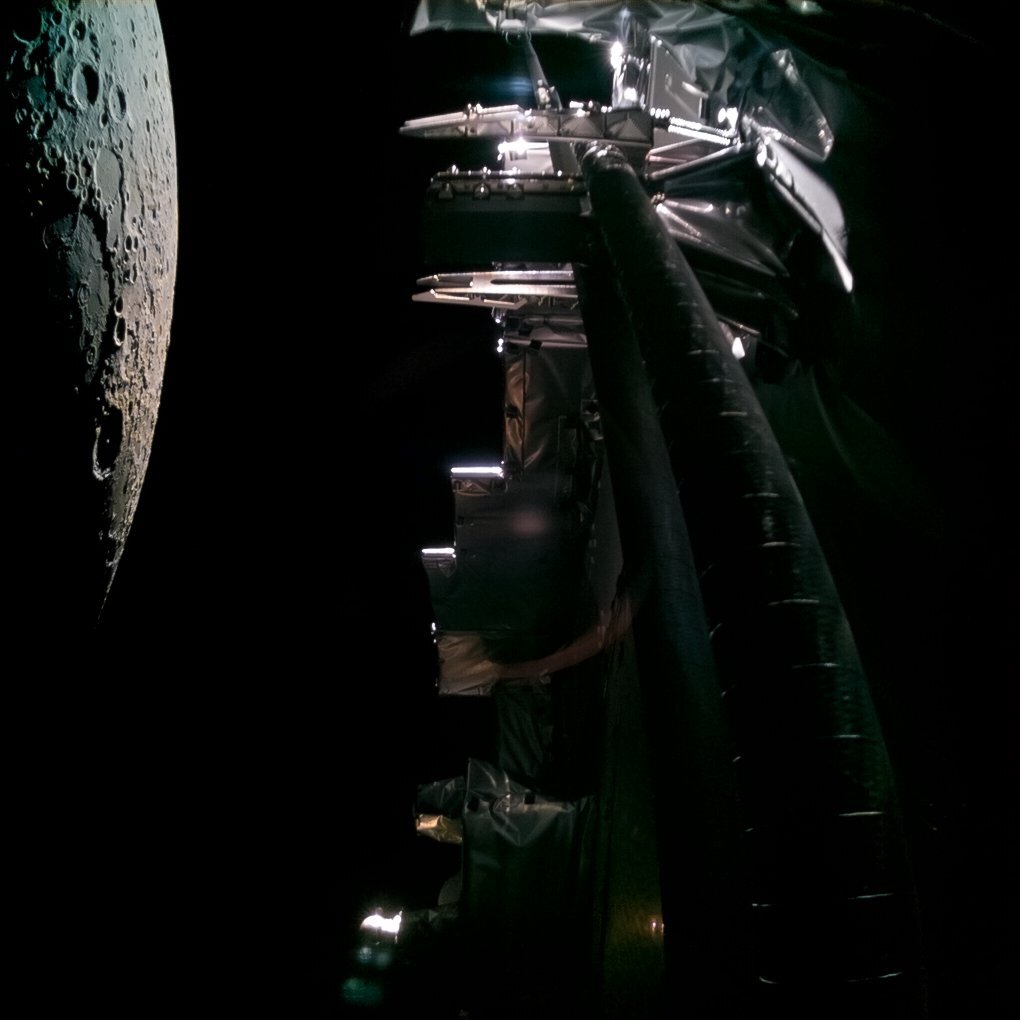ESA has published the first images taken by the JUICE probe during the double gravity maneuver. You can see the Moon and the spacecraft on them.

JUICE met the Moon on the night of August 19-20. The vehicle flew at a distance of only 700 kilometers from its surface and then headed toward Earth. JUICE will reach it today. The distance of the minimum approach to our planet will be 6,807 kilometers. The spacecraft will fly directly over Southeast Asia and the Pacific Ocean and can be seen through binoculars or a telescope.
This rendezvous is the first in a complex chain of gravitational maneuvers that should accelerate JUICE to sufficient speed to ensure its entry into orbit around Jupiter. Mission specialists decided to take this opportunity to test the work of the probe’s instruments, including cameras. In total, the JUICE navigation cameras took several hundred images of the Moon.
ESA has published two processed images from JUICE’s navigation cameras. The first image shows the southeastern part of the visible side of the Moon. Mare Fecunditatis and the craters Petavius and Langrenus are in the frame.

The center of the second photo is dominated by the 16-meter antenna of the RIME radar, which will allow JUICE to look beneath the icy surface of Jupiter’s moons. The lunar disk can be seen in the left part. If you look closely, you can see a light crescent moon peeking out from behind the spacecraft structure in the upper center part of the image. This is our Earth.
Curiously, the satellite spotters and radio amateurs who followed the JUICE flyby intercepted the vehicle’s telemetry and the images it transmitted, and used them to create their own animation. It allows you to visualize what the Moon flyby looked like from aboard JUICE.
With ~260 frames received from JUICE at Bochum @amsatdl overnight, here’s an animation of the full moon flyby from 2 point of views! 🙂 It seems the data can be RGB, so it should be quite nice for Earth data later. pic.twitter.com/MSgFi3Lqub
— Aang254 (@aang254) August 20, 2024
It is worth noting that in addition to the navigation cameras, JUICE also photographed the Moon and Earth with its main camera. Its images are expected to be released a few days after the flyby is completed.


